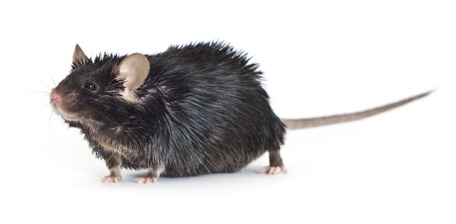Role of osteopontin in obesity
As obesity rates world-wide continue to rise, so too will the negative health effects associated with obesity. These negative health effects of obesity include reduced life expectancy and increased risk of other complications such as type 2 diabetes, heart disease, osteoarthritis, sleep apnea and certain cancers. Osteopontin (OPN, encoded by Spp1 gene) is an extracellular matrix protein that is expressed in multiple cell and tissue types, including bone, macrophages, dendritic cells, smooth muscle and endothelial cells. OPN is associated with many physiological processes including wound healing, bone turnover, tumorigenesis and inflammation. OPN is produced in adipose tissue, is more highly expressed in visceral adipose tissue in obesity, and is involved in insulin resistance and obesity-associated pro-inflammation. A recent report in PLos One (Lancha et al. 2014) describes how mice lacking OPN are protected against the development of diet-induced obesity (DIO) and hepatic steatosis.
OPN deficiency prevents DIO and hepatic steatosis

C57BL/6J (000664) male mice are susceptible to diet-induced obesity (DIO) when fed a high-fat diet (HFD). Such DIO mice are obese and glucose intolerant but do not become hyperglycemic. Therefore they serve as a model for obesity and pre type-2 diabetes. The B6.129S6(Cg)-Spp1tm1Blh/J (004936) mice are on a C57BL/6 genetic background and express no OPN gene product. C57BL/6J and the B6.129S6(Cg)-Spp1tm1Blh/J mice were placed on either a high-fat (60% kcal from fat) or chow diet. On the HFD, the B6.129S6(Cg)-Spp1tm1Blh/J (OPN knockout) mice as compared to the C57BL/6J:
- Gained significantly less weight and adipose mass
- Displayed smaller epididymal white adipose tissue (EWAT) cell size and a lower percentage of large adipocytes
- Exhibited lower serum leptin and corticosterone levels
- Showed lower serum levels of glucose, insulin and insulin resistance (HOMA)
- Exhibited lower liver weights, intrahepatic triglyceride levels, serum glycerol and serum cholesterol
- Displayed improved brown adipose tissue (BAT) structure and function
Expression of Spp1 mRNA was dramatically increased in EWAT and liver of C57BL/6J DIO mice compared to C57BL/6J mice on the chow diet. Transcription of Cd44, an OPN receptor, was elevated in adipose tissue and livers of the C57BL/6J DIO mice but not in the B6.129S6(Cg)-Spp1tm1Blh/J mice on the HFD. These data demonstrate that OPN plays an important role in the development of diet-induced obesity and steatosis, and that OPN deficiency is protective against them.
OPN deficiency causes impaired tissue matrix remodeling and reduced inflammation and fibrosis
Matrix metalloproteinases (MMPs) are endopeptidases that are capable of degrading extracellular matrix proteins, and are involved in adipose tissue expansion. Mmp2 expression was increased in the C57BL/6J DIO mice but not in the B6.129S6(Cg)-Spp1tm1Blh/J mice on the HFD. While MMP2 and MMP9 protein levels were not altered by the HFD or the OPN deficiency, their gelatinase activity was significantly increased in the C57BL/6J DIO mice but not in the B6.129S6(Cg)-Spp1tm1Blh/J HFD mice.
The number of macrophages present in EWAT, expression of pro-inflammatory cytokines, and levels of oxidative stress were dramatically increased in the C57BL/6J DIO mice, but the OPN deficiency protected against or blunted such increases. Obesity has also been shown to be related to fibrosis in the liver and adipose tissue. In the C57BL/6J DIO mice, pronounced fibrotic streaks in the liver and adipose tissues were observed along with increased expression of collagens. The B6.129S6(Cg)-Spp1tm1Blh/J HFD fed mice had reduced fibrotic streak thickness and collagen gene expression.
These data provide evidence for the role OPN plays in the development of diet-induced obesity in mice through adipose tissue expansion/remodeling, inflammation and fibrosis. OPN deficiency is shown to be protective against the development of obesity, which indicates that OPN is a potential drugable target for treatment of obesity.